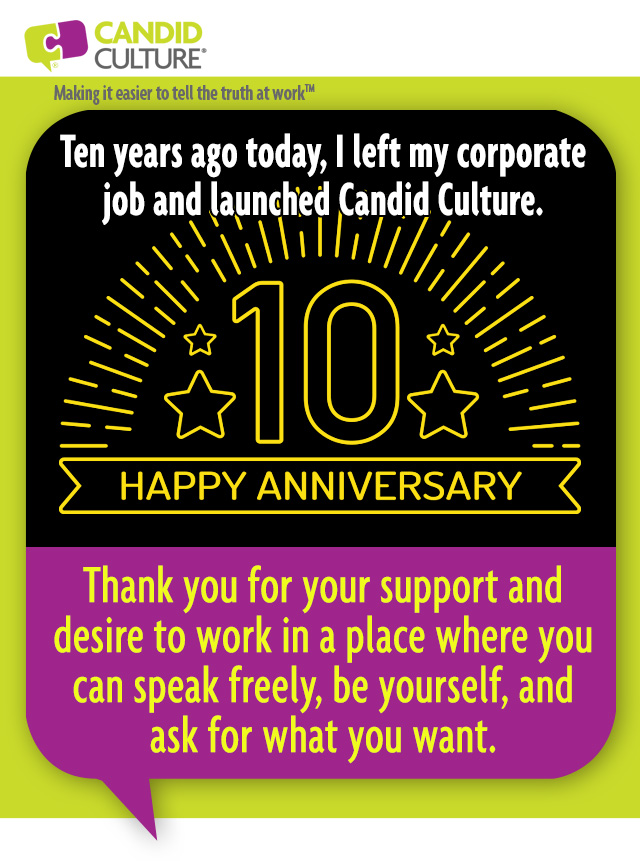Candid Culture Turns 10 – Give and Receive Feedback

Ten years ago today I left my corporate job and launched Candid Culture, business communication training. I’ll admit to being terrified and being pretty convinced I would fail. I thought about starting the business for 12 years, but was paralyzed by fear. The only thing that finally motivated me to act, was that at the time, I worked for someone who didn’t believe me when I said I didn’t want the internal opportunity he was giving me. Don’t give a woman who can barely use Excel, leadership over the Finance department.
The training and keynote speaking I do have evolved over the past ten years, as organizations’ needs have changed. A few things have remained constant.
Here’s what I’ve learned in the past ten years:
- People struggle more than I ever realized when receiving negative feedback. People care about the work they do, want to do a good job, and want to be thought well of. Negative feedback calls all of that into question.
Most people question themselves when receiving negative feedback, and that’s a very painful process.
What do to: Give very small amounts of feedback at a time. Share one or two things the person can work on. More negative information sends our brains to a dark place, where we feel we can’t be successful, and performance actually drops.
Provide feedback on the positive changes or lack thereof, that you see. Don’t let people work in a vacuum. After you’ve seen some improvement, give one or two additional pieces of feedback.
- Most of us get almost no feedback at work – positive or negative. “Good job” doesn’t qualify as feedback. But that’s almost all the ‘feedback’ most people get.
- Even if you ask for feedback, you probably won’t get much, because the other person is concerned about your potential negative reaction.
- Managers are afraid employees will quit if they give negative feedback or report them to HR or the Union.
- People really want to know how they’re doing – good and bad – even if they don’t want to hear the message.
- Giving negative feedback requires courage and a trusting relationship, in which the feedback recipient trusts that the person’s motives are pure.
So what to do with all of this information? Be courageous and clear. Remember that the purpose of feedback is to be helpful. Care enough to be uncomfortable. Specific is helpful. Giving feedback will always be challenging. If you want to give less feedback, get better at making specific requests. You get what you ask for.




